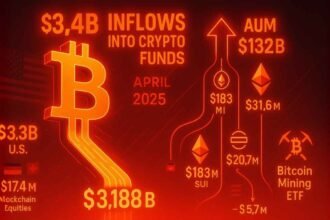Sonic Labs ends its stablecoin plan for an algorithmic token linked to the UAE dirham while the UAE plans to roll out its digital currency.
Sonic Labs terminated its US dollar stablecoin project to create a stablecoin backed by UAE dirhams.
On March 22, Sonic Labs co-founder Andre Cronje informed Cointelegraph through an interview that his firm now develops an algorithmic stablecoin tied to the UAE dirham currency.
The company suddenly decided to stop working on its project seven days after starting it.
On March 28, Cronje said they would not launch the planned US dollar stablecoin through his X post. Our upcoming product is not a traditional stable coin since it uses numerical Dirham, which settles and amounts to USD without being a USD-based algorithmic stable coin.
Shortly following their announcement, the UAE planned to start the digital dirham CBDC in 2025. The company made a strategic reversal.
Governor Khaled Mohamed Balama of the Central Bank of the UAE stated that blockchain-based dirham currency will improve financial stability systems against monetary crimes. According to the Khaleej Times report the digital version of money will operate parallel to the regular cash payments in all transaction channels.
According to Paolo Ardoino, competitors and political figures want to stop Tether from operating.
People began to criticize Sonic for its stablecoin development efforts.
The company made this decision because industry experts and customers criticized its first stablecoin plan, which used an algorithmic approach following Terra’s market crash in 2022.
Cronje acknowledged his fear of algorithmic stablecoin dueto past crypto issues that caused him Post-Traumatic stress disorder (PTSD).
Our team made key findings in algorithmic stablecoin creation, but prior cycle trauma holds me back from implementing this today.
The Terra ecosystem fell apart in May 2022 and destroyed more than $40 billion in value within three days. Anchor Protocol users earned more than 20% annually from TerraUSD before the collapse happened.
After UST lost its dollar connection and tanked to $0.30 levels, Do Kwon reported his recovery approach through X (then Twitter). LUNA token dropped 98% in value, down to $0.84, when sister token Terra collapsed at the same time. LUNA maintained its trading value above $120 during the first weeks of April 2022.
The US Treasury securities Tether holds rank seventh globally, behind eleven countries in its asset portfolio
The Terra stablecoin collapse caused widespread reaction among both political authorities and cryptocurrency users across the market.
Under MiCA regulation,s Europe will block algorithmic stablecoins to stop another platform like Terra from failing.
According to David Pakman of CoinFund, stablecoins are now widely employed for daily purchasing activities instead of massive money movements.
According to Pakman, during the X show Chainreaction on March 27, he observed that stablecoin transactions now handle smaller amounts, showing increasing usage for daily payments instead of big asset transfers.









